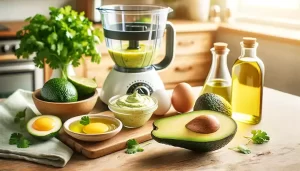Extending the Life of Parsley: Innovative Techniques for Long-Lasting Freshness
Parsley, a quintessential herb in the culinary world, is known for its ability to enhance the flavor of a wide array of dishes. Whether it’s curly or flat-leaf, keeping parsley fresh and vibrant for extended periods can be a challenge. Here are some innovative and effective techniques to ensure your parsley stays fresh for months.
Understanding Parsley’s Importance in Cooking
- Nutritional Value: Parsley is not just a garnish; it’s a powerhouse of nutrients like vitamin C, vitamin K, and iron, and is an excellent source of antioxidants.
- Culinary Uses: Used in salads, soups, and as a seasoning for meats and vegetables, parsley elevates the taste and appearance of dishes.
Innovative Preservation Techniques
- The Baking Soda Method:
- Preparation: Wash and chop the parsley, then place it in a deep container.
- Baking Soda Bath: Add a tablespoon of baking soda and submerge the parsley in cold water, ensuring it’s completely soaked for about 15 minutes.
- Rinsing and Drying: Rinse the parsley under running water, change the water thrice, and then dry it thoroughly on a clean sponge towel.
- Storage in a Glass Jar:
- Jar Preparation: Place a paper towel at the bottom of a clean, dry glass jar.
- Filling the Jar: Gently press the dried parsley into the jar, ensuring it’s not overly packed.
- Refrigeration: Store the jar in the refrigerator. This method can keep the parsley fresh for about a month.
Additional Tips for Maximum Freshness
- Selection: Always choose vibrant green leaves and avoid any yellowish or wilted ones.
- Regular Check: Periodically check the parsley in the jar for any signs of spoilage and remove any wilted or discolored leaves.
- Air Circulation: Don’t pack the parsley too tightly in the jar; adequate air circulation is key to preventing mold growth.
- Avoid Moisture: Ensure the parsley is completely dry before storing to prevent moisture buildup, which can lead to rot.
Alternative Preservation Methods
- Freezing: For longer storage, parsley can be frozen. Chop it finely, place it in an ice cube tray with water, and freeze. These parsley cubes can be directly used in cooking.
- Drying: Dried parsley is another option. Hang the parsley bunches in a warm, dry place. Once dried, crumble the leaves and store them in an airtight container.
Conclusion
With these techniques, keeping parsley fresh and flavorful for an extended period is not only possible but also quite simple. By incorporating these methods into your kitchen routine, you can ensure that this versatile herb is always on hand, ready to enhance your culinary creations.



















